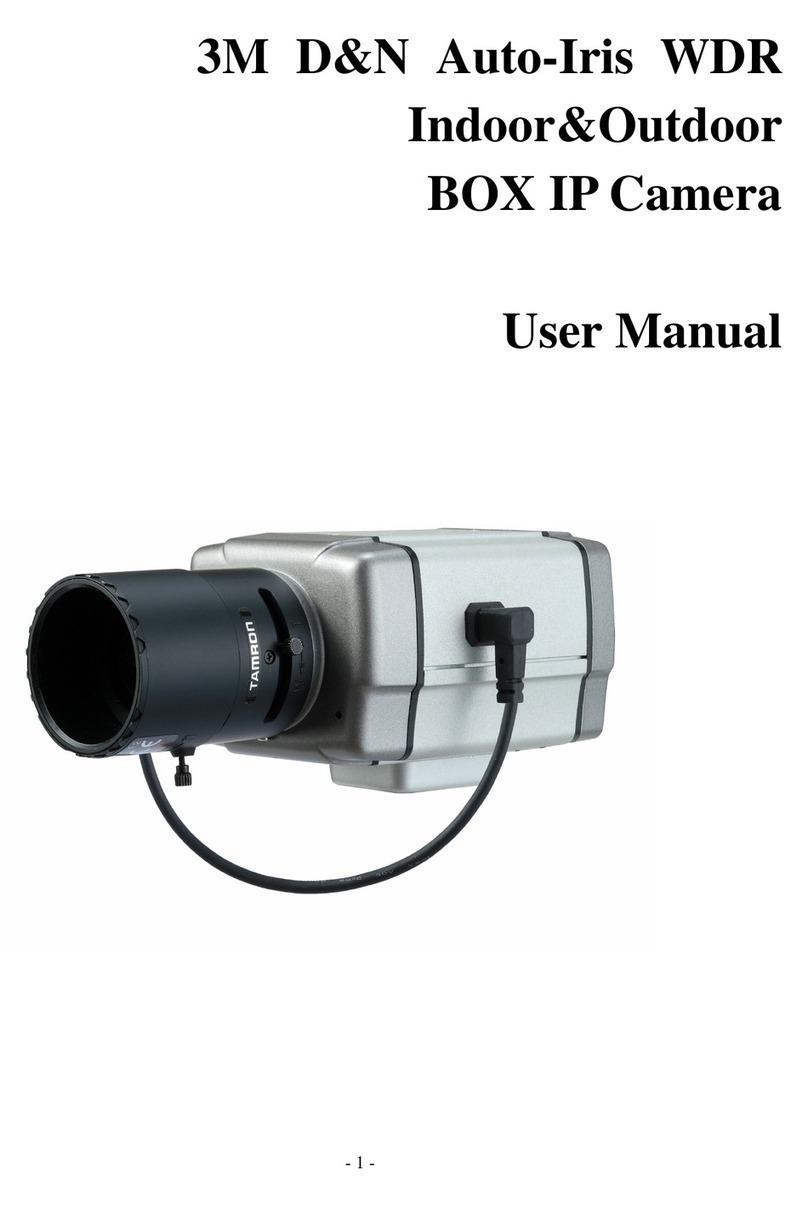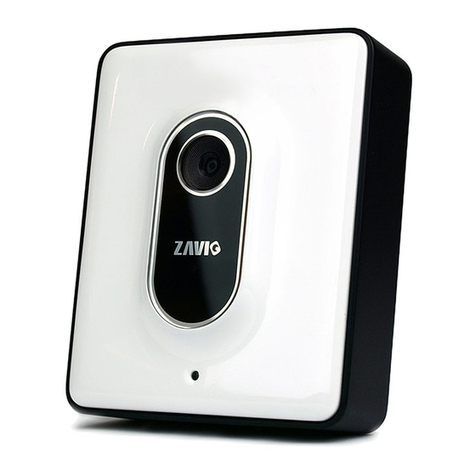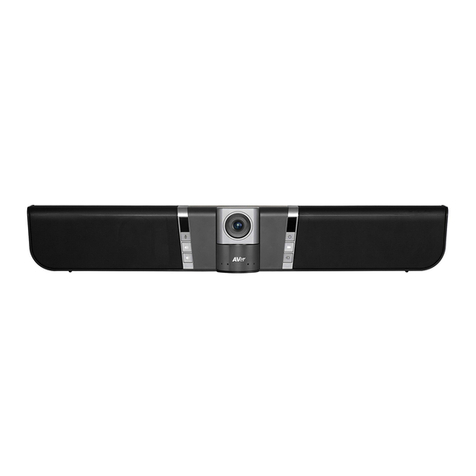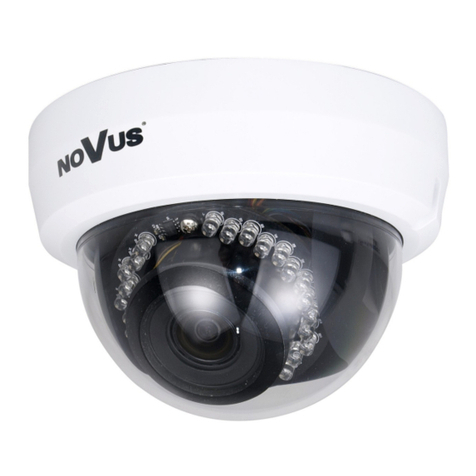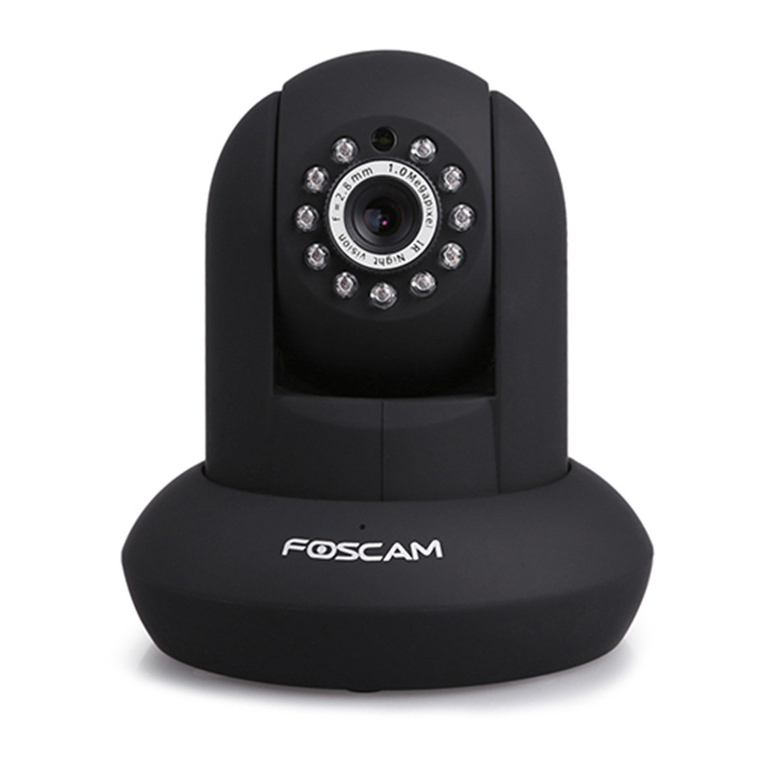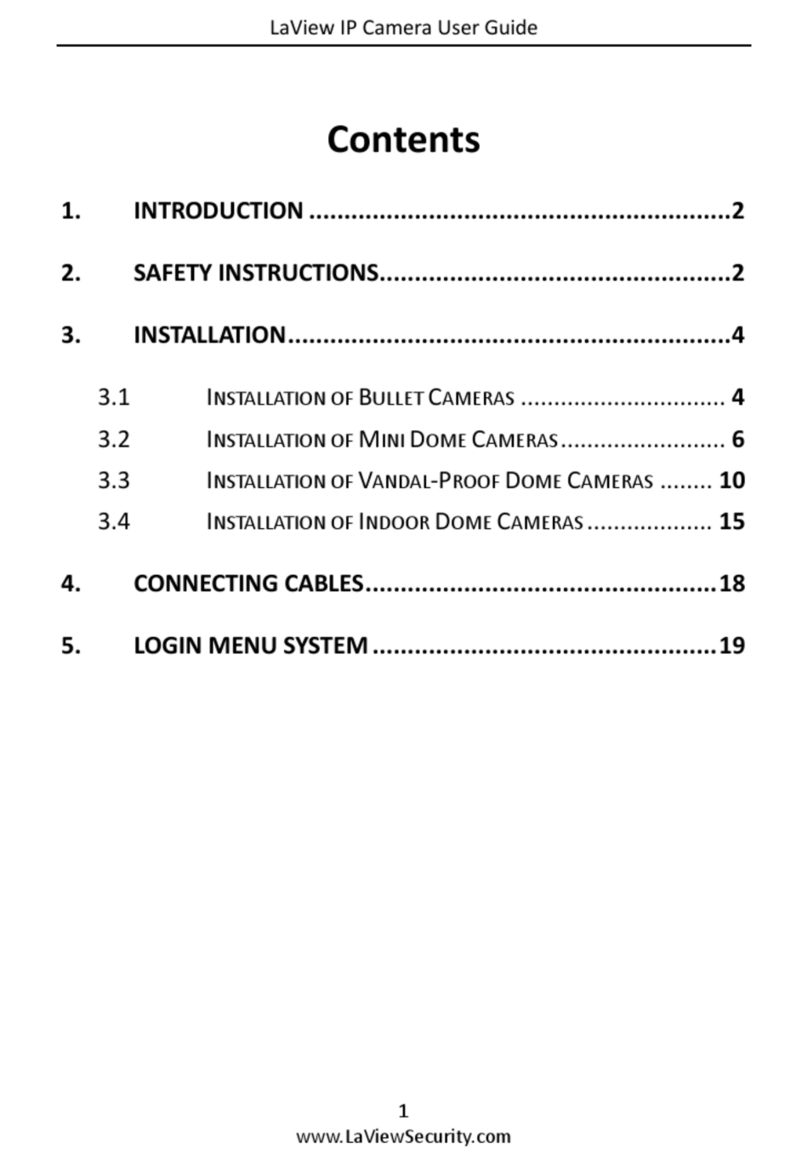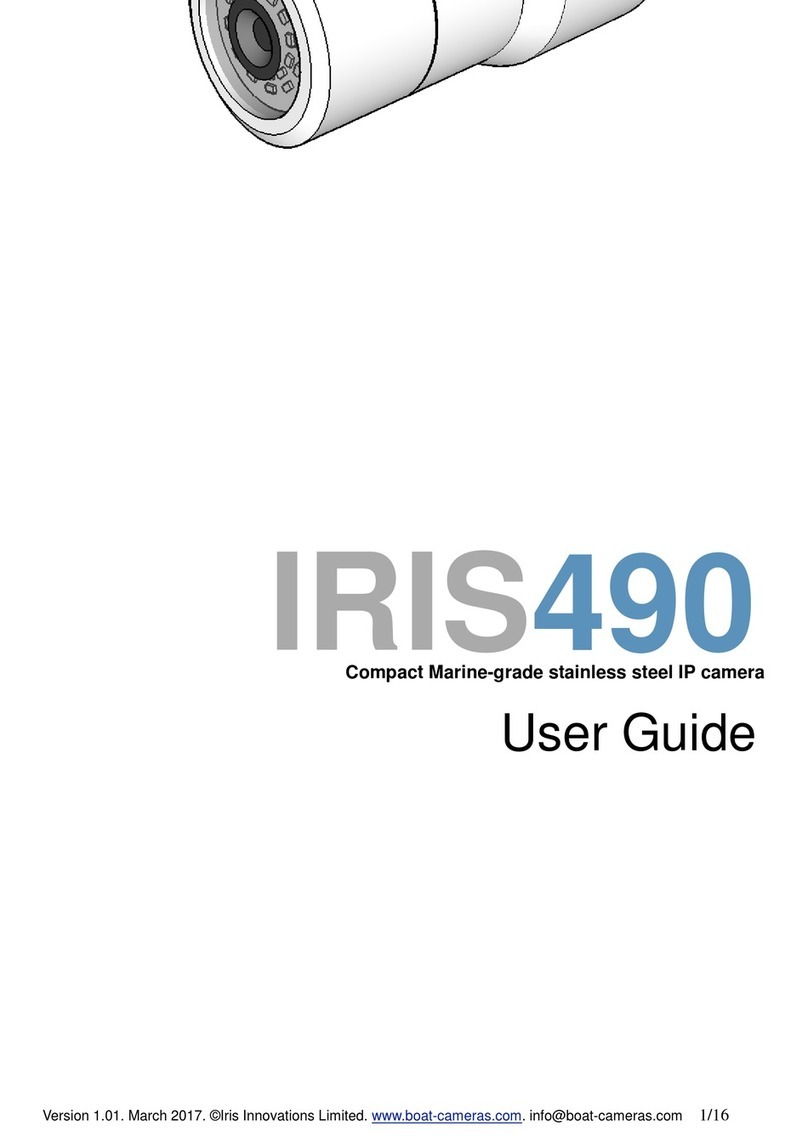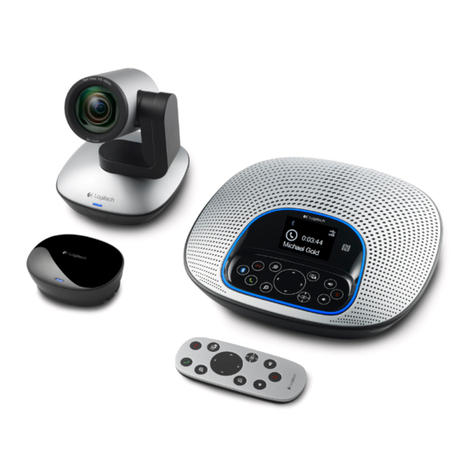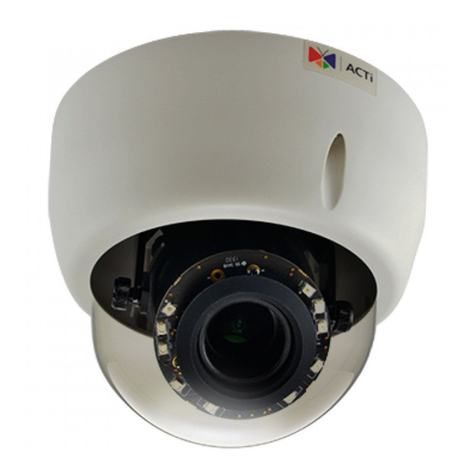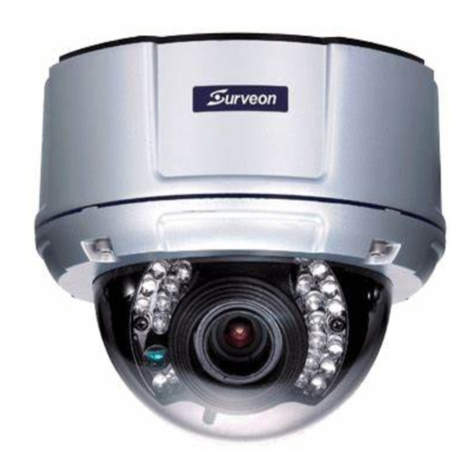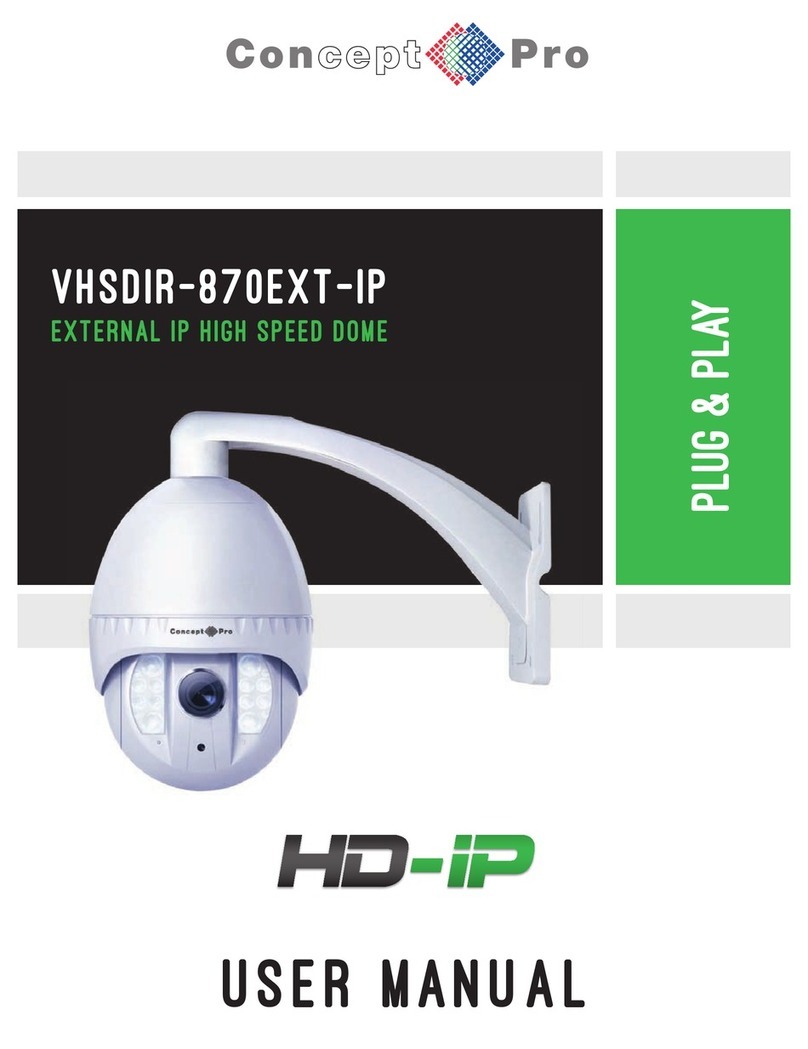Provision ISR DAI-310IP04 User manual


PROVISION-ISR
DAI-310IP04
I3-310IP04
DI-310IPVF
DAI-390IP04
I3-390IP04
DI-390IPVF
DAI-390IP04
I3-390IP04
DI-390IPVF
User Manual
IP Camera
For H.264 IP Camera
All rights reserved

Notes
Before operation, we strongly advise users to read this manual and keep it properly for
using later.
Please use the specified power supply to connect.
Avoid from incorrect operation, shock vibration, heavy pressing which can cause
damage to product.
Do not use corrosive detergent to clean main body of the camera. If necessary, please
use soft dry cloth to wipe dirt; for hard contamination, use neutral detergent. Any
cleanser for high grade furniture is applicable.
Avoid aiming the camera directly towards extremely bright objects, such as, sun, as this
may damage the image sensor.
Please follow the instructions to install the camera. Do not reverse the camera, or the
reversing image will be received.
Do not operate the camera in extreme temperatures or extreme humidity conditions.
Use the power supply supplied authorized by a PROVISION-ISR technician.
Keep away from heat sources such as radiators, heat registers, stove, etc.
The instructions in this manual could be outdated; if you need any clarifications you can
contact an authorized PROVISION-ISR technician. PROVISION-ISR reserves the
right to add changes to this manual and publish it online in our website
(www.provision-isr.com): there may be inconsistencies with the latest version. This
applies to any and all software upgrades and product improvements, interpretation and
modification added. These changes will be published in the latest version without
prior notification.
When this product is in use, the relevant contents of Microsoft, Apple and Google will
be involved in. The pictures and screenshots in this manual are only used to explain
the usage of our product. The ownerships of trademarks, logos and other intellectual
properties related to Microsoft, Apple and Google belong to the above-mentioned
companies.
All pictures and examples used in the manual are for reference only.

IP CAMERA USER MANUAL
Table of Contents
1Introduction ......................................................................................................... 1
2IE Remote Access ................................................................................................. 2
2.1LAN ................................................................................................................................... 2
2.1.1Access through IP-Tool ......................................................................................... 2
2.1.2Directly Access through IE .................................................................................... 3
2.2WA N .................................................................................................................................. 4
3Remote Preview ................................................................................................... 6
3.1The Remote Preview Interface .............................................................................................. 6
3.2Playback ............................................................................................................................. 7
3.3Snap Pictures ....................................................................................................................... 7
4Remote Live Surveillance ..................................................................................... 9
4.1System Configuration ........................................................................................................... 9
4.1.1Basic Information................................................................................................. 9
4.1.2Date & Time Configuration ................................................................................... 9
4.2Video Configuration ........................................................................................................... 10
4.2.1Camera Configuration ........................................................................................ 10
4.2.2Video Stream ..................................................................................................... 11
4.2.3OSD Configuration ............................................................................................ 11
4.2.4Video Mask ....................................................................................................... 12
4.2.5ROI Configuration ............................................................................................. 13
4.3Alarm Configuration .......................................................................................................... 14
4.3.1Motion Detection Area ....................................................................................... 14
4.3.2Motion Detection Trigger .................................................................................... 14
4.3.3Motion Detection Schedule ................................................................................. 15
4.4Network Configuration ....................................................................................................... 16
4.4.1Port .................................................................................................................. 16
4.4.2IP Address ......................................................................................................... 16
4.4.3Server Configuration .......................................................................................... 17
4.4.4IP Notify ........................................................................................................... 17
4.4.5DDNS Configuration .......................................................................................... 18
4.4.6RTS P ................................................................................................................ 21
4.4.7UPNP ............................................................................................................... 21
4.4.8Mail Setting ....................................................................................................... 22
4.4.9FTP .................................................................................................................. 22
4.5Advanced Configuration ..................................................................................................... 23
4.5.1User Configuration ............................................................................................. 23
4.5.2Security Configuration ........................................................................................ 25
4.5.3Configure Backup & Restore ............................................................................... 25
4.5.4Reboot Device ................................................................................................... 26
4.5.5Upgrade ............................................................................................................ 26
5Mobile Surveillance............................................................................................ 27
5.1Network Configuration ....................................................................................................... 27

IP CAMERA USER MANUAL
5.2By Phones with iPhone OS ................................................................................................. 27
7.3 By Phones with Android .................................................................................................................. 33
6IP-Tool ............................................................................................................... 36
7Q & A ................................................................................................................ 39

Page 1 IP CAMERA USER MANUAL
1 Introduction
This IP-CAMERA (short for IP-CAM) is designed for high performance CCTV solutions. It
adopts state of the art video processing chips. It utilizes most advanced technologies, such as
video encoding and decoding technology, complies with the TCP/IP protocol, SoC, etc to
ensure this system more stable and reliable. This unit consists of two parts: the IP-CAM
device and central management software (short for CMS). The CMS centralizes all devices
together via internet or LAN and establishes a sound surveillance system to realize unified
management and remote operation to all devices in one network.
This product is widely used in banks, telecommunication systems, electricity power
departments, law systems, factories, storehouses, uptowns, etc. In addition, it is also an ideal
choice for surveillance sites with middle or high risks.
Main Features
ICR auto switch, true day/night
3D DNR, digital WDR
ROI coding
Support CVBS output
Support MIC IN
PoE power supply
Support smart phone, iPad, remote monitoring (Via Provision CAM/HD)
Vandal-proof
Support P2P (NET Traversal)

Page 2 IP CAMERA USER MANUAL
2 IE Remote Access
You may connect IP-Cam via LAN or WAN. Here only take IE browser (6.0) for example.
The details are as follows:
2.1 LAN
In LAN, there are two ways to access IP-Cam: 1. access through IP-Tool; 2. directly access
through IE browser.
2.1.1 Access through IP-Tool
① Make sure the PC and IP-Cam are connected to the LAN and the IP-Tool is installed in the
PC from the CD.
② Double click the IP-Tool icon on the desktop to run this software as shown below:
③ Modify the IP address. The default IP address of this camera is 192.168.226.201. Click the
information of the camera listed in the above table to show the network information on the
right hand. Modify the IP address and gateway of the camera and make sure its network
address is in the same local network segment as the computer’s. Please modify the IP address
of your device according to the practical situation.
For example, the IP address of your computer is 192.168.13.4. So the IP address of the camera
shall be changed to 192.168.13.X. After modification, please input the password of the

Page 3 IP CAMERA USER MANUAL
administrator and click “Modify” button to modify the setting.
④ Double click the IP address and then the system will pop up the IE browser to connect
IP-CAM. IE browser will auto download the Active X control. After downloading, a login
window will pop up as shown below.
Input the username and password to log in.
2.1.2 Directly Access through IE
The default network settings are as shown below:
IP address: 192.168.226.201
Subnet Mask: 255.255.255.0
Gateway: 192.168.226.1
HTTP: 80
Data port: 9008
You may use the above default settings when you log in the camera for the first time.
① Manually set the IP address of the PC and the network segment should be as the same as
the default settings of the IP camera. Open the network and share center. Click “Local Area
Connection” to pop up the following window.
The default password of the administrator is “123456”.
The default username is “admin”; the default password is “123456”.

Page 4 IP CAMERA USER MANUAL
Select “Property” and then select internet protocol according to the actual situation (for
example: IPV4). Next, click “Property” button to set the network of the PC.
② Open the IE browser and input the default address of IP-CAM and confirm. The IE
browser will download Active X control automatically.
③ After downloading Active X control, the login dialog box will pop up.
④ Input the default username and password and then enter to view.
2.2 WAN
Take access the camera by the router or virtual server for example
① Make sure the camera is well connected via LAN and then log in the camera via LAN and
go to the ConfigNetwork ConfigPort menu to set up the port number.

Page 5 IP CAMERA USER MANUAL
② Go to Config Network ConfigWired menu to modify the IP address.
③ Go to the router’s management interface through IE browser to forward the IP address and
port of the camera in the “Virtual Server”.
Port Setup IP Setup
Router Setup
④ Open the IE browser and input its WAN IP and http port to access.

Page 6 IP CAMERA USER MANUAL
3 Remote Preview
3.1 The Remote Preview Interface
When motion detection alarm is triggered, the people icon will turn red.
Right click to pop up a pull-down list as shown below:
Stream: Three streams are optional.
Turn off the live: Click this item to close present live preview.
Full screen: The live preview picture will be full-screen display.
Double click or click right mouse to return to the previous
interface.
Online user: Display the current user connecting to the device.
System information: Display the device information: device name,
firmware version, software build date, kernel version and hardware version.
1 People icon 6 Full screen
2 Fix size 7 Start recording
3 Actual size 8 Playback
4 Zoom in 9 Snap
5 Zoom out 10 Enable audio

Page 7 IP CAMERA USER MANUAL
3.2 Playback
Before you play the record files, please make sure you have recorded. You may click
button to record. Then click button to pop up a video player. Double click the record file
to play the video as shown below.
1 Play 5 Next frame 9 Zoom out
2 Pause 6 The previous file 10 Full screen
3 Stop 7 The next file 11 Path
4 Forward 8 Zoom in 12 Volume
3.3 Snap Pictures
Select the picture number, and then click “Snap” icon as shown below:
Single Snap

Page 8 IP CAMERA USER MANUAL
Snap multiple pictures
Select the picture number from Frame pull down list box, such as 2, and check “Title” and
“Time” to show capture title and time on the snap pictures simultaneously.
Multi-picture Snap

Page 9 IP CAMERA USER MANUAL
4 Remote Live Surveillance
Functions of remote configurations include: System Configuration, Video Configuration,
Alarm Configuration, Network Configuration and Advanced Configuration. You should
firstly select the menu on the left, and then set up the relative parameters. When one user
configures parameters of a certain device, other users can not set up this device.
4.1 System Configuration
The “System configuration” includes two submenus: Basic Information and Date & Time.
4.1.1 Basic Information
In the “Basic Information” interface, you can set up the device name and can also check the
relative information of the server
Setting steps:
1. Clicking the “Config” icon will appear the menu list.
2. Clicking the “Basic Information” will pop up a window as shown below:
3. Input the name of the device in the “Device name” text box.
4. Press the “Save” button to save the settings.
Please refer to the following table for parameters and instructions of server basic
configuration.
Parameter Meaning
Software version The software of the device
Software build date The software build date of the device
Kernel version The kernel version of the device
Hardware version The hardware version of the device
Mac Address MAC address of device
Maximum number of user Support max 10 users to access
Device name Name of the device.
4.1.2 Date & Time Configuration
Setting steps:
1. Go to ConfigDate & Time menu as shown below.

Page 10 IP CAMERA USER MANUAL
2. Set time zone.
3. Enable DST mode as required.
4. Set time. You may set time manually or enable NTP.
4.2 Video Configuration
Camera Configuration includes five submenus: Camera Configuration, Video Stream, OSD
Config, Video Mask and ROI Config.
4.2.1 Camera Configuration
Setting steps:
1.Go to “Video Configuration” “Camera” interface as shown below.
2. You may adjust brightness, contrast, hue and saturation of the picture.
3. Select white balance mode.
4. Wide dynamic, sharpen, and denoise are adjustable.
5. You can also set day-night mode and enable the image mirror and image overturn function.
6. You may frequency and repair bad pixel.
7. Press the “Save” button to save the settings.

Page 11 IP CAMERA USER MANUAL
4.2.2 Video Stream
Go to “Video configuration” “Video Stream” to see an interface as shown below.
Three video streams can be adjustable.
Resolution: The higher the resolution is, the clearer the image is.
Frame rate: The higher the frame rate is, the more fluency the video is. However, more
storage room will be taken up.
Bitrate type: Including CBR and VBR. CBR means that no matter how changeable the video
resources are, the compression bitrate keeps constant. This will not only facilitate the image
quality better in a constant bitrate but also help to calculate the capacity of the recording.
VBR means that the compression bitrate can be adjustable according to the change of the
video resources. This will help to optimize the network bandwidth .
Video Quality: When VBR is selected, you need to choose image quality. The higher the
image quality you choose, the more bitrate will be required.
Bitrate: Please choose it according to the actual network situation.
I Frame interval: It is recommended to use the default value. If the value is over high, the
read speed of the group of pictures will be slow resulting in the quality loss of the video.
Video encoding profile: Baseline, main profile and high profile are optional. Baseline profile
is mainly used in interactive application with low complexity and delay. Main or high profile
is mainly used for higher coding requirement.
Alarm picture size: Please select it according to the actual situation.
Video encode slice split: If enabled, you may get more fluency image even though using the
low-performance PC.
4.2.3 OSD Configuration
Go to “Video Config” “OSD Config” menu to display the interface as shown below.

Page 12 IP CAMERA USER MANUAL
You may set time stamp, device name and custom OSD here. Drag the time stamp and custom
OSD to set their position. Then press the “Save” button to save the settings.
4.2.4 Video Mask
You can set 4 mask areas at most.
To set up video mask
1. Enable video mask and select mask color.
2. Click “Draw” button and then drag the mouse to draw the video mask area.
3. Click “Save” button to save the settings.
4. Return to the live to see the following picture.

Page 13 IP CAMERA USER MANUAL
Clear the video mask:
Go to video mask menu and then click “Clear” button to delete the current video mask area.
4.2.5 ROI Configuration
To set up ROI
1. Go to ConfigROI Config menu.
2. Check “Enable” and then click “Draw” button.
3. Drag the mouse to set the ROI area.
4. Set the level.
5. Click “Save” button to save the settings.
Now, you will see the selected ROI area is clearer than other areas especially in low bitrate
condition.

Page 14 IP CAMERA USER MANUAL
4.3 Alarm Configuration
Alarm configuration includes three submenus: Motion Detection Area, Motion Detection
Trigger and Motion Detection Schedule.
4.3.1 Motion Detection Area
1. Go to “Alarm configuration” “Motion Detection Area” to see an interface as below.
2. Move the “Sensitivity” scroll bar to set up the motion trace sensitivity.
3. Check the “Add”, press the “Ctrl” button and move mouse to select the motion detection
area. Select “Erase” and move the mouse to clear all motion detection area.
4. Press the “Save” button to save the settings.
4.3.2 Motion Detection Trigger
1. Go to “Alarm Configuration” “Motion Detection Trigger” to display an interface as
shown below.
2. Check “Enable alarm” check box. Then all functions under this interface will be activated.
3. Trigger Email: Check “Attach picture” and the triggered snap pictures will be sent into the
address.
4. Trigger FTP: Check “Uploading picture”. Then the triggered snap pictures will be sent into
FTP server address. Please refer to FTP configuration chapter for more details.
5. Press the “Save” button to save the settings.

Page 15 IP CAMERA USER MANUAL
4.3.3 Motion Detection Schedule
Go to “Alarm configuration” “Motion Detection schedule” interface as shown below.
Week schedule
User could set the alarm time from Monday to Sunday for alarm everyday in one week.
Add: Add the schedule for a special day.
Erase: Delete holiday schedule.
Day schedule
You could set alarm time for alarm in some time of special day, such as holiday.
1. Select a date at the “Date” pull down list, press “Add” button to add that date to the list box
on the right side and then move the scroll bar to set the schedule of that day.
2. Select a date in the list box on the right side, and press “Erase” to remove the schedule on
This manual suits for next models
5
Table of contents
Other Provision ISR IP Camera manuals
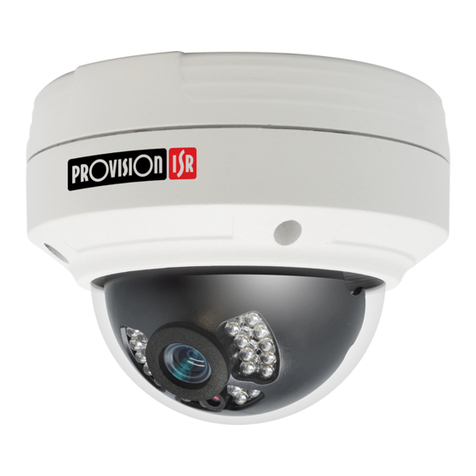
Provision ISR
Provision ISR DAI-310IPVF User manual
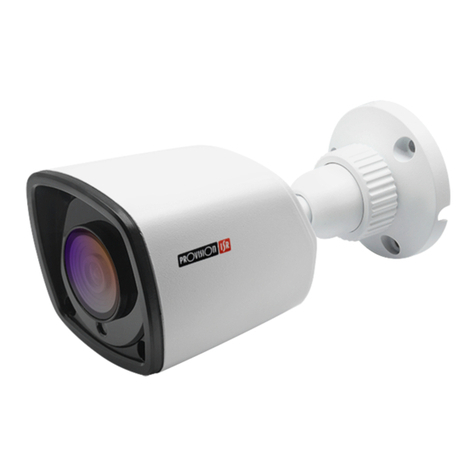
Provision ISR
Provision ISR I1-390IPS36 User manual
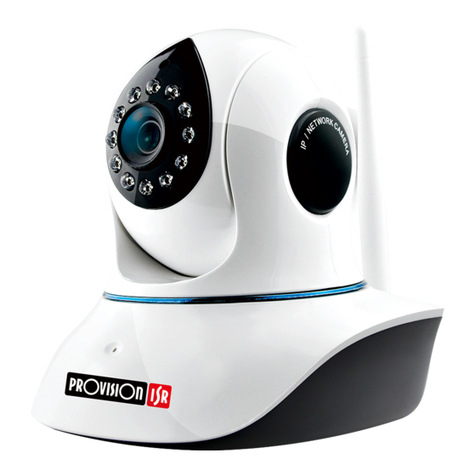
Provision ISR
Provision ISR PT-737 Operating and maintenance instructions
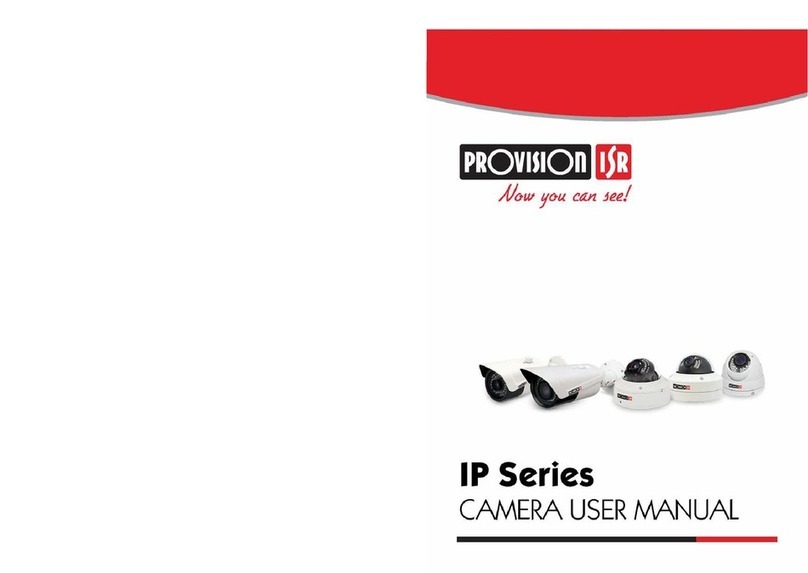
Provision ISR
Provision ISR DAI-310IPHEVF User manual
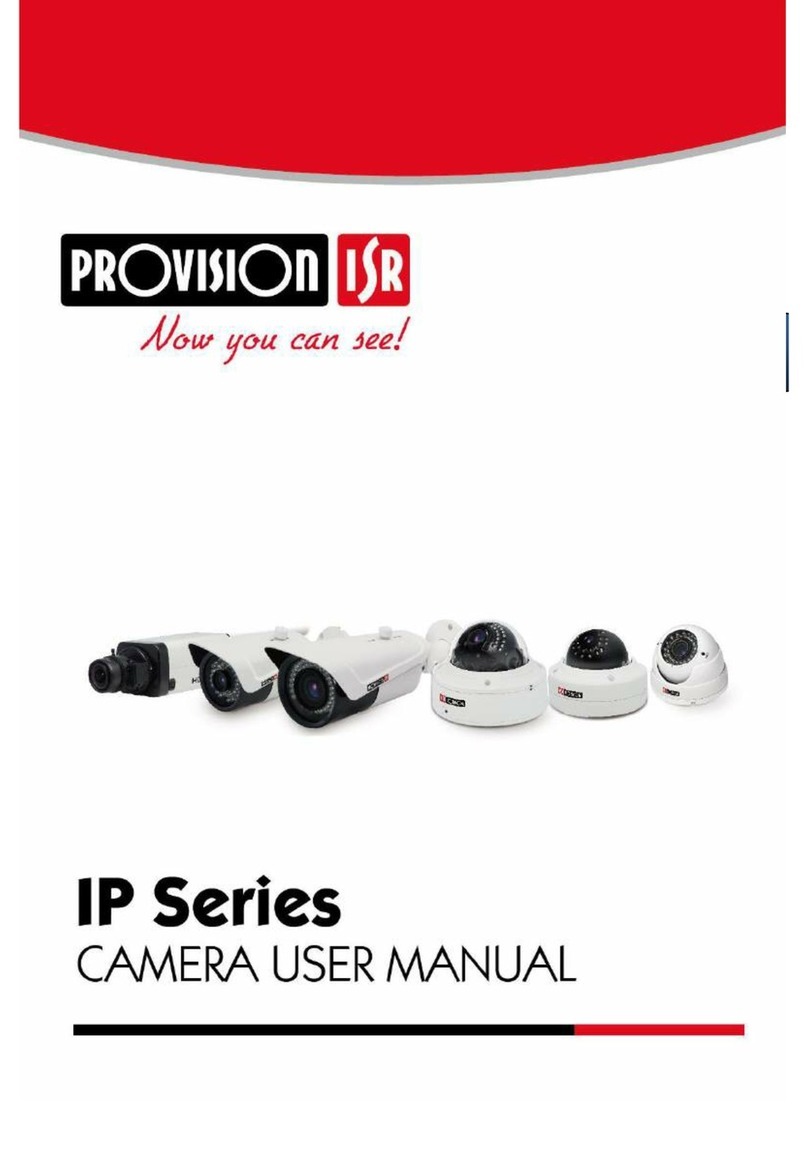
Provision ISR
Provision ISR DAI-380IP04 User manual
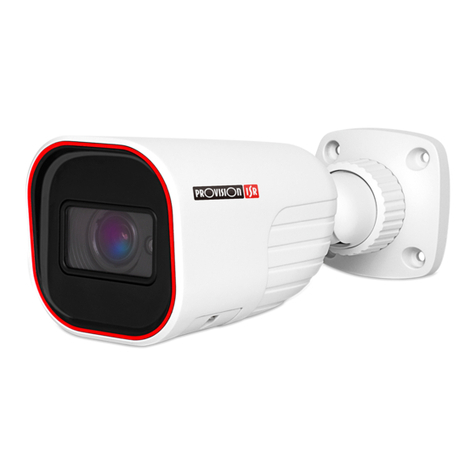
Provision ISR
Provision ISR IP Series User manual
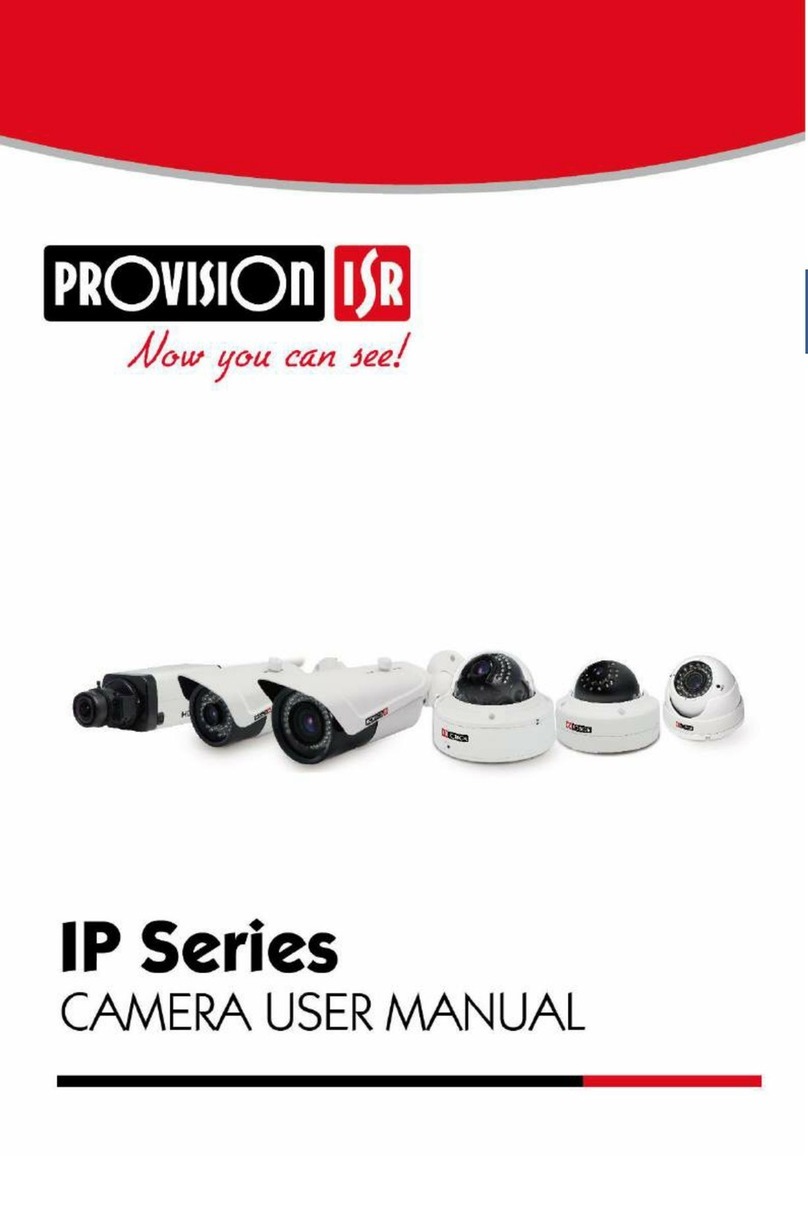
Provision ISR
Provision ISR BX-390IP User manual
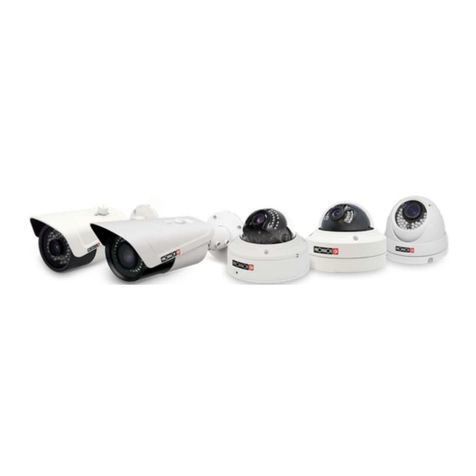
Provision ISR
Provision ISR BX-342IP5 User manual

